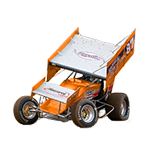How to manage 1,240 layers
Copy link to clipboard
Copied
OK, so I just did an "Image Trace" on a jpg of a truck. It was a reasonably simple image. Not a photograph. I set the trace to 16 colors and it gave me 1,234 paths / layers.
Needless to say that's a nightmare to try and manage. Is there some way to simplify the management of this many layers? So far I've been trying to group the objects into colors or component groups such as tires / black & gray or body parts / blues, greens etc. but it's still a monster of a challenge to manage or to even work with. Near impossible.
Explore related tutorials & articles
Copy link to clipboard
Copied
It's not 1200 layers, just 1200 objects.
Your only chance is to group them.
You can of course open the layers panel preferences and set it to show only layers. Maybe that is what you want.
Copy link to clipboard
Copied
Every object has its own layer.
BTW, I'm using CS6. An early edition local install. Not CC
Copy link to clipboard
Copied
Every object has its own layer.
Every object is listed in the Layers palette. That doesn't mean each listing is a Layer.
Back when a Layers palette was just that; a list of Layers, only Layers were listed. Somewhere along the way, someone had the bright-eyed idea that the Layers palette should list all objects that reside on each Layer. When that was implemented, it would have been more intuitive to rename the Layers palette the Objects palette or Object Stack. But this is Illustrator.
I set the trace to 16 colors and it gave me 1,234 paths / layers. Needless to say that's a nightmare to try and manage.
What exactly do you mean by "manage" them?
If you want to be able to edit them by color, then you can:
- Select all.
- Swatches palette flyout menu: Add Selected Colors. (16 Global Swatches should be created.)
You can then doubleClick any of the 16 added Swatches, edits its color, and all objects with that Swatch will update accordingly.
Or, if you want to be able to select them by color you can:
- Deselect.
- Select one object.
- Select Menu: Same>Fill Color.
You can then save the Group the selected objects, move them into a separate Layer, combine them into a Compound Path, store the selection (Select Menu: Save Selection), etc.
JET
Copy link to clipboard
Copied
Does the trace look like how you want? You can undo and try with fewer colors and different settings. Go to Window > Image Trace to get to more options. You can also expand the result and go to Object > Path > Simplify... to reduce the number of points. The more points there are the more it will affect performance.
Copy link to clipboard
Copied
Yes the trace looks good it's just that it's an impossible number of layers. Also would be great if there was a better way to to move layers in the stacking order. So far I've been selecting the layer I want and dragging it to the top of the stack. Which of course if there are several hundred layers takes for ever. It would be great if I could cut & past layers within the stack. Is there something I'm missing on that score?
Copy link to clipboard
Copied
Well, I'm not clear on what you want to do with the layers because you have various options for making selections, but you did mention trying to group them by color. Here's one way to do that. Use the Direct Selection Tool to select one part then go to Select > Same > Fill Color (or whatever other attribute might help you select them).
Copy link to clipboard
Copied
roncurington schrieb
Yes the trace looks good it's just that it's an impossible number of layers. Also would be great if there was a better way to to move layers in the stacking order. So far I've been selecting the layer I want and dragging it to the top of the stack. Which of course if there are several hundred layers takes for ever. It would be great if I could cut & past layers within the stack. Is there something I'm missing on that score?
If you haven't deliberately created layers, then you don't have layers. You have paths.
And since you did an autotrace, the stacking order doesn't even matter. None of your objects overlaps the other. Changing the stacking order doesn't make a lot of sense.
Copy link to clipboard
Copied
And since you did an autotrace, the stacking order doesn't even matter. None of your objects overlaps the other.
They may. CS6's ImageTrace palette provides a Method option of either Abutting or Overlapping.
JET
Copy link to clipboard
Copied
https://forums.adobe.com/people/Monika+Gause wrote
roncurington schrieb
Yes the trace looks good it's just that it's an impossible number of layers. Also would be great if there was a better way to to move layers in the stacking order. So far I've been selecting the layer I want and dragging it to the top of the stack. Which of course if there are several hundred layers takes for ever. It would be great if I could cut & past layers within the stack. Is there something I'm missing on that score?
If you haven't deliberately created layers, then you don't have layers. You have paths.
And since you did an autotrace, the stacking order doesn't even matter. None of your objects overlaps the other. Changing the stacking order doesn't make a lot of sense.
Actually It makes a lot of sense to me because it is a horrendous pain to scroll through 1,000 layers every time I want to do something.
Copy link to clipboard
Copied
roncurington schrieb
Actually It makes a lot of sense to me because it is a horrendous pain to scroll through 1,000 layers every time I want to do something.
Perhaps you can show a screenshot and tell us what you want to put into groups?
Selecting parts with the lasso tool doesn't work for you?
Copy link to clipboard
Copied
Are they Layers or Paths?
The Bring to Front Shortcut is Shift + Ctrl/Cmd + }
Copy link to clipboard
Copied
roncurington wrote
OK, so I just did an "Image Trace" on a jpg of a truck.
Unfortunately, that may have been the wrong thing to do.
It was a reasonably simple image. Not a photograph. I set the trace to 16 colors and it gave me 1,234 paths / layers.
Yes, no matter how simple the image, image trace does not necessarily produce something that could be called a vector "conversion;" but rather carries out an "interpretation" of the image, then produces a corresponding stack of vector objects approximating what was "seen." Where you might think perhaps one of the wheels on your truck would/could be drawn from scratch convincingly using 3 or 4 vector objects, image trace may deliver 3 or 4 hundred objects.
Needless to say that's a nightmare to try and manage. Is there some way to simplify the management of this many layers? So far I've been trying to group the objects into colors or component groups such as tires / black & gray or body parts / blues, greens etc. but it's still a monster of a challenge to manage or to even work with. Near impossible.
Yes, this is what you have to compare with rebuilding it manually. If the original graphic was simple enough for you to settle for 16 colors, it's quite likely you could achieve a much better result in less or comparable time by redrawing and/or tracing manually.
Copy link to clipboard
Copied
So far I've been trying to group the objects into colors or component groups such as tires...or body parts....
That is the fundamental fallacy of the "auto-magic" beginners (are often led to) expect from auto-tracing features: There is no intelligence in auto-tracing.
You see a tire as a tire. You see the body parts as body parts. The auto-tracing algorithm sees none of that. It just sees a rectangular array of pixels. It then tries to draw a path surrounding each cluster of similarly-colored adjacent pixels. It knows absolutely nothing about shape. It doesn't know tire from body. It doesn't even know that a tire is round or that a truck body is boxy.
So if you want to "group the objects [the vector paths that result from auto-tracing] into colors" you can do that by the steps described in Post 8. But if you want to group the paths that comprise the tire or the body or any other component of the truck, you will have to tediously select them, because nothing in the program knows which paths comprise which parts of the subject.
When you draw something deliberately, intelligence is involved. You organize the paths of the drawing into meaningful parts of the subject as you go.
This is why the proper use for auto-tracing (as it predominately exists today, with no shape-recognition intelligence) is almost always as a last resort for use in limited special situations. Its result is far and away most often sub-standard for anything properly called vector-based illustration.
Auto-tracing negates the advantage of vector-based graphics (resolution independence) in the first place, because it just swaps a vector version of scale-dependent ugliness (jagged vector paths of meaningless shape) for the raster version of scale-dependent ugliness (visible square pixels).
JET
Find more inspiration, events, and resources on the new Adobe Community
Explore Now

